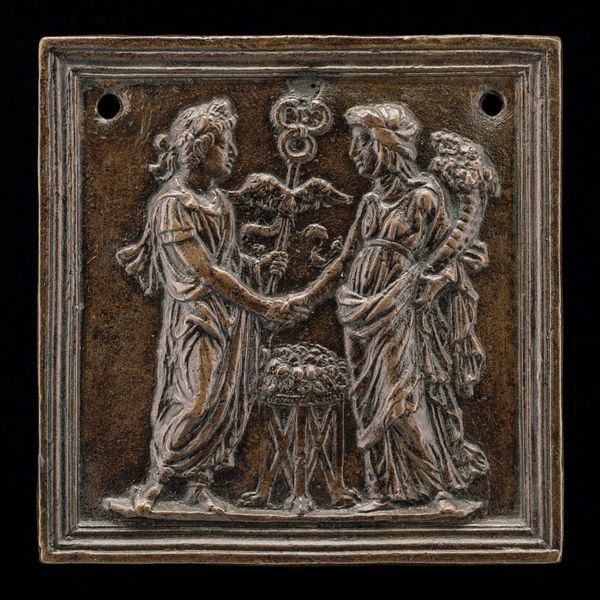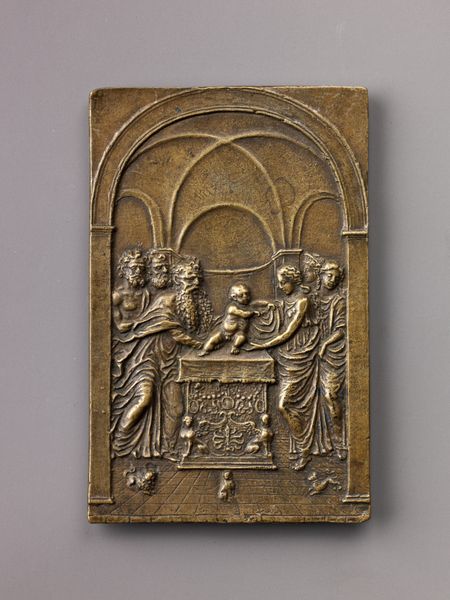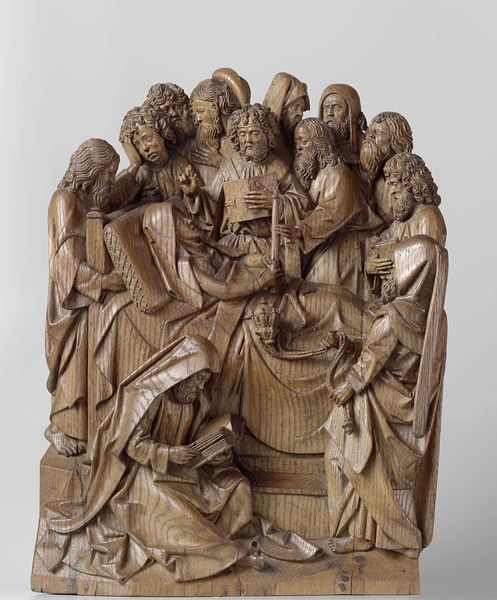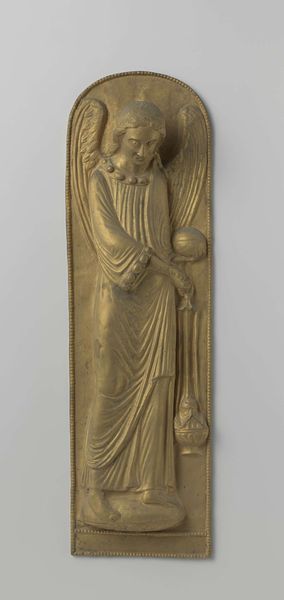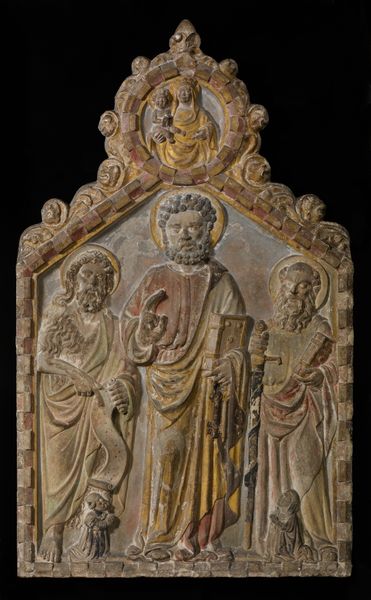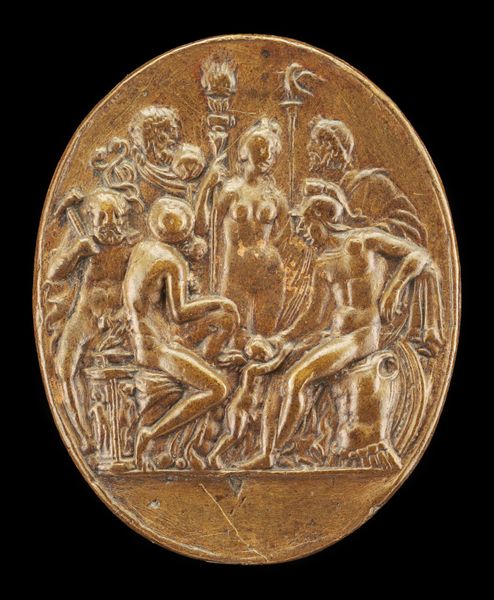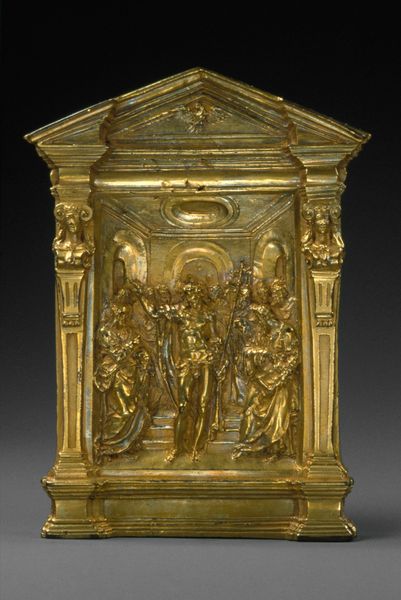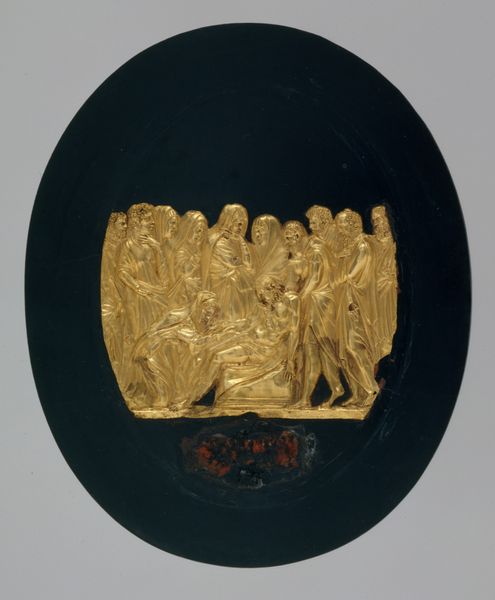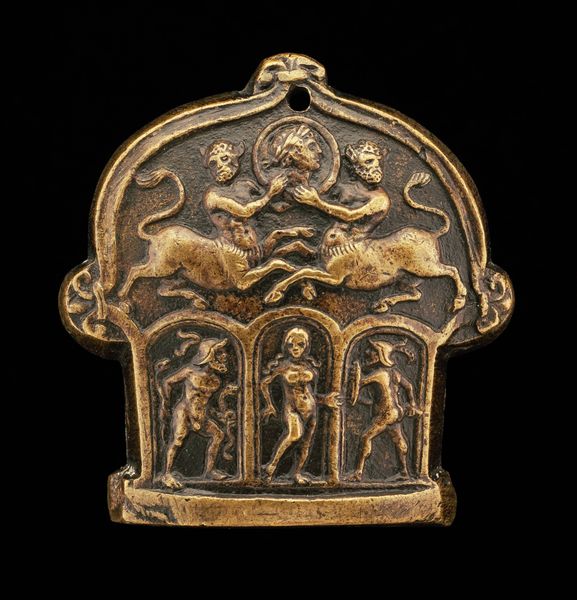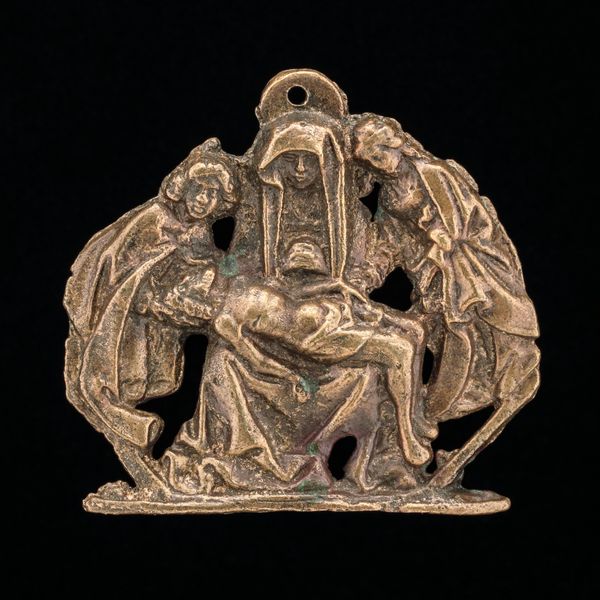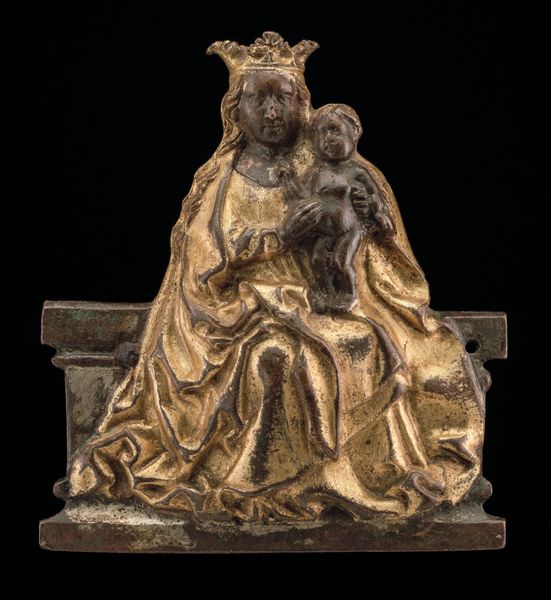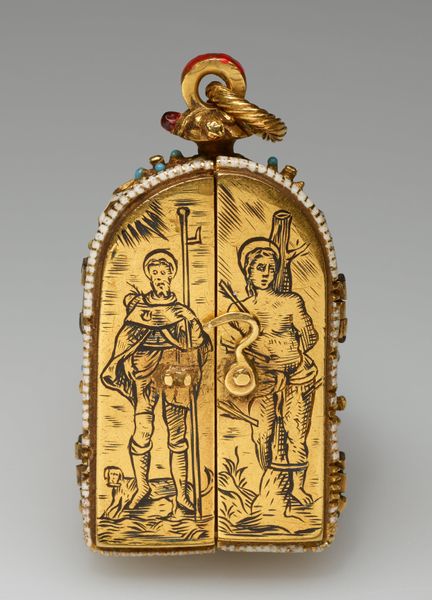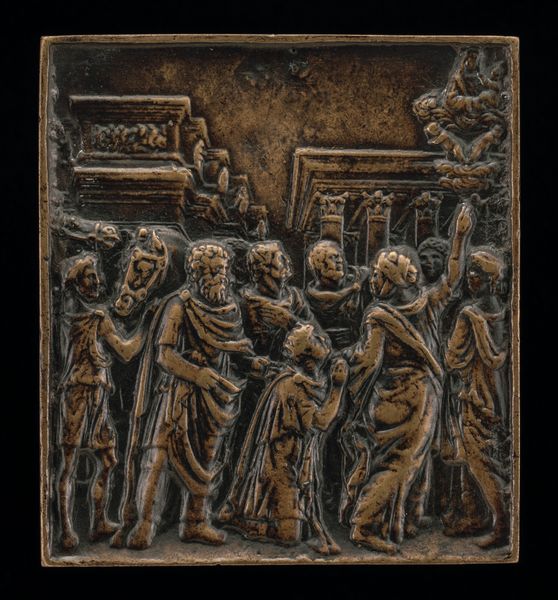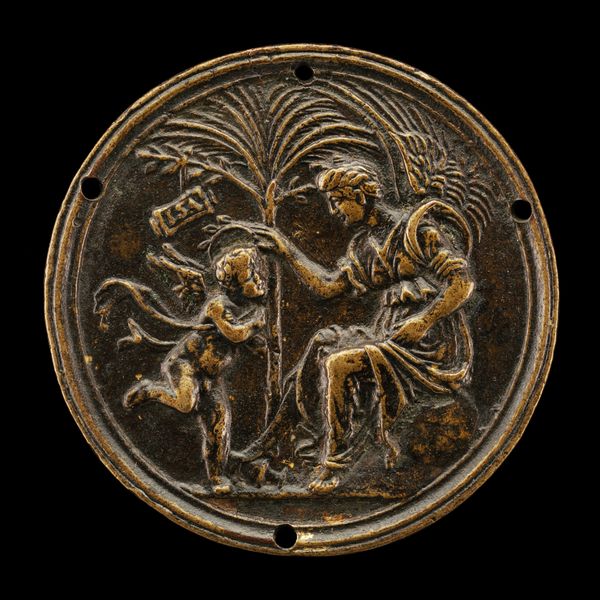
relief, sculpture, enamel
#
medieval
#
narrative-art
#
stone
#
sculpture
#
relief
#
sculptural image
#
figuration
#
sculpture
#
enamel
#
history-painting
Dimensions: 11 1/2 x 11 x 1 1/2 in. (29.21 x 27.94 x 3.81 cm)
Copyright: Public Domain
Editor: This intriguing relief sculpture, "The Entombment of Christ," dates back to around 1250. Its current home is at the Minneapolis Institute of Art, and I am immediately struck by its small size. What strikes you most when you view this? Curator: Well, first off, isn't it remarkable how much emotion is conveyed despite its size? For me, it’s the gravity, the quiet reverence embedded within this medieval piece that speaks volumes. This artwork encapsulates a very specific moment: the laying of Christ in his tomb. Editor: You're right, the piece seems so still and heavy, you almost feel it when looking at it. What else can you tell us about it? Curator: Its medium is especially important here: imagine the painstaking process of creating this from stone or enamel! Then, consider that art during this time was didactic, it taught people religious stories who could not read; its narrative aspect invites viewers into the biblical story. What do you feel about that as a student studying today? Editor: It does lend a very sacred mood, a great way to immerse an audience and to tell a well known tale. Now I notice their downcast eyes, their gentle hold on Christ's body – the figures aren't just witnessing an event; they're experiencing profound loss, isn’t it beautiful? Curator: Precisely. And note the stylized forms so typical of the period, they speak more of an ideal rather than any earthly realm. Now consider its display– likely within a personal collection of sacred devotional figures rather than to shock. How might this affect a medieval patron versus a 21st century gallery goer? Editor: That context gives the image far greater spiritual weight; its accessibility would invite private meditation on the event. The narrative and devotional blend here provides a powerful sense of history in art. Thanks for providing the historical and sacred insight, so impactful and memorable. Curator: A journey through the looking glass together then! And always with art!
